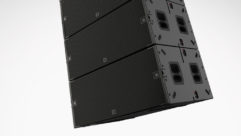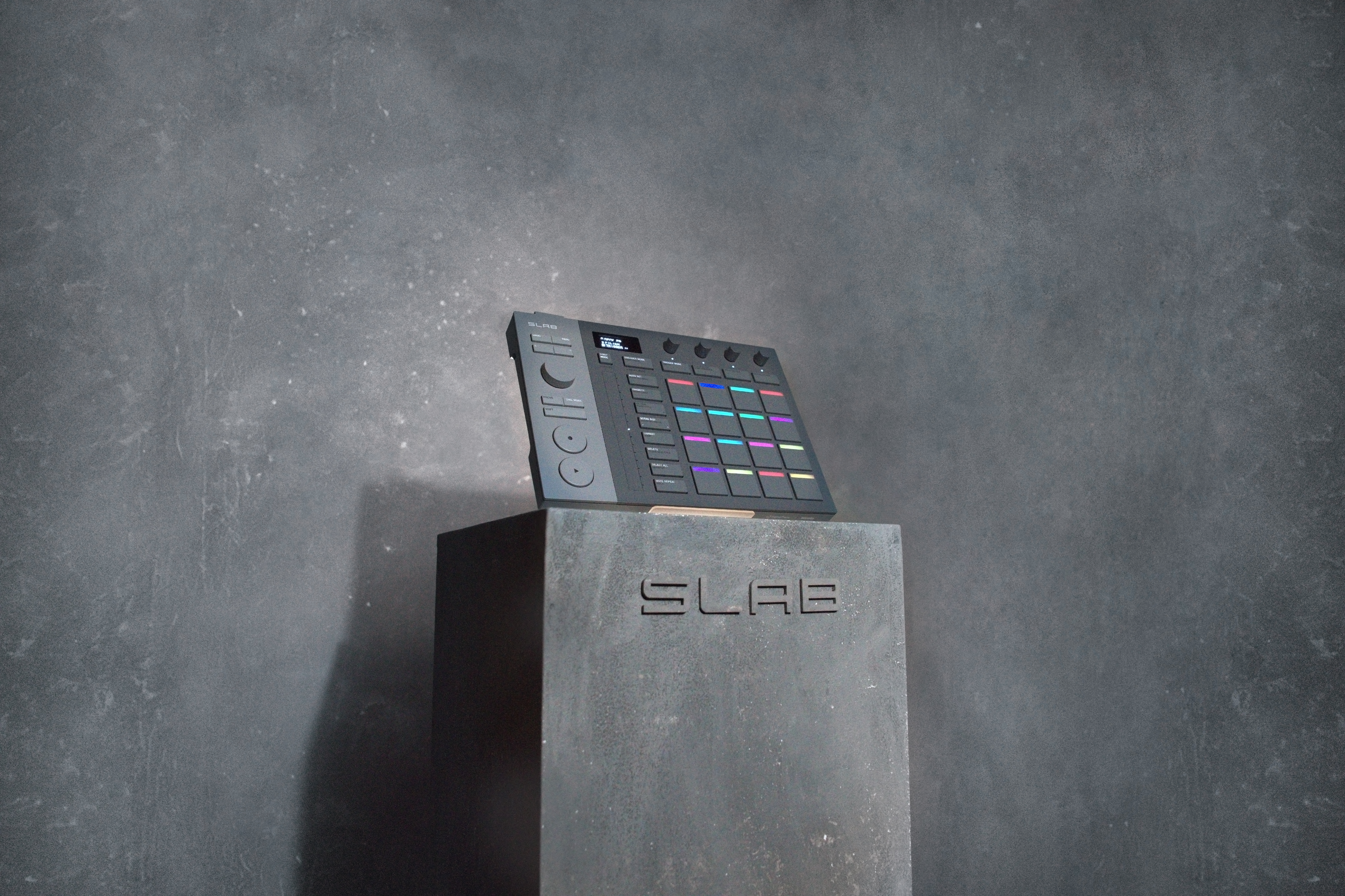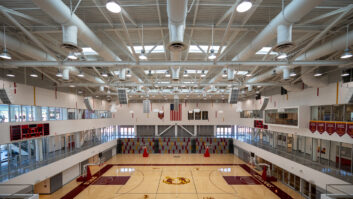
Taking the Connected Home on the Road
Aug 18, 2008 10:31 AM,
By Jeff James

Figure 1. Click here for a larger image
Judging by the success of the Apple iPhone and other smart phones, today’s consumers are more interested than ever in having a rich mobile-phone experience that includes email, web browsing, games, music, and other types of dynamic interaction. This trend hasn’t gone unnoticed by the auto industry, which has been working for years to add support for music players and Bluetooth devices to their product offerings.
Perhaps one of the most ambitious examples of this new trend is Ford Sync, an in-car communication system jointly developed by Microsoft and Ford Motor Company. Using Ford Sync, drivers can use voice commands to check their voicemail, access music on a digital music player, change the radio station, and place calls with a Sync-supported mobile phone. Sync supports dozens of mobile devices, ranging from the iPhone to Windows Mobile-equipped smart phones, and other devices. (See Ford’s Sync website for a complete list of Ford Sync-compatible devices.) Ford Sync is currently available as an option on many 2008 Ford and Mercury vehicles, and is a standard feature on all 2009 Lincoln models.
I had the opportunity to speak with Gary Jablonski, manager of Telematics at Ford Motor Company, about Ford Sync, and what the future holds for this exciting new technology. (For more about how Ford Sync works with mobile phones, check out the Windows IT Pro article Ford Sync Makes Mobile Phones More Mobile.)
Jeff James: When did you start actively talking to Microsoft about developing Ford Sync?
Gary Jablonsky: Our conversations with Microsoft started slowly, and increased with intensity over time. We signed a contract for the Sync project and actually started work in the first quarter of 2006. I want to say it was March of 2006, but first quarter is safe.
JJ: Prior to that, was there any development work done on what was to eventually become Ford Sync?
GJ: Well, the history of Sync is an interesting story by itself. The product concept [for Sync] within Ford was really hatched by a grassroots group of engineers who were really motivated to change the way we develop entertainment and communications system for automobiles. It typically takes us the better part of three years to bring a product from idea to production. The end result of that is you go to a showroom and see a brand-new car, and the technology in it is three years old, at best. So, some engineers here that work on my team were motivated to find a way to increase the speed at which we could introduce new features and try to keep pace with the consumer electronics industry, in terms of compatibility with phones and other devices that people were bringing into their cars.
We independently hatched this concept for putting a high-horsepower computing hardware platform in the car, then building features over time on it in software. Because the features are built in software, development time is much shorter and creates the possibility of upgradable vehicles; I can buy it today, and get a new software application tomorrow.
Ford engineers had a concept for putting a platform in the car. We somewhat crossed paths with Microsoft almost by coincidence. They had internally been working on a derivative of Windows CE (now called Microsoft Auto) that was really built around the same vision: to put a [hardware] platform in the car, put a flexible OS on it, and create an environment to really encourage innovation and [the development of] lots of software applications. It was a very happy, coincidental marriage. Our visions were almost perfectly aligned, [as] Microsoft needed an automotive partner to try to push this into the auto industry and Ford needed a technology partner to make this idea a reality. The partnership has been really productive and beneficial for both of us.
JJ: How long did the development of Ford Sync take?
GJ: Our first functional prototype—the first system we assembled in a car and were able to demonstrate to any significant extent—was in early 2007. From that point forward, we completed the applications that were in the device, and began [closed] testing and beta testing. We had a very large fleet [of Sync-equipped vehicles]— approaching 100 internal customers, actually Ford employees in Michigan—who helped test the system from about March 2007 until we launched in August [with the 2008 Ford Focus]. So from about March 2007 to August 2007, we had a substantial beta test fleet that continually helped us test the Sync system.
A huge variable and a big challenge in developing any product like this was our desire to have broad device compatibility to phones and music players. The Bluetooth standard isn’t a “standard” standard. So, that really was a challenge for us. If you develop a Bluetooth system and want it to talk to [Bluetooth-enabled] phones, you really need to test that device with [a large number] of other Bluetooth devices. A good portion of our development time was spent either purchasing devices or setting up sessions in which we had customers bring their devices in and verify compatibility or reveal incompatibility issues.
Taking the Connected Home on the Road
Aug 18, 2008 10:31 AM,
By Jeff James

Microsoft CEO Bill Gates. Click here for a larger image
We participated in Bluetooth [Special Interest Group] SIG-sponsored plug-fests where device manufacturers get together during a prototype or dev phase to ensure that we’re headed down a path to compatibility. My team here at Ford has actually developed partnerships with phone manufacturers, media-player manufacturers, and cellular carriers here in the United States to try and stay ahead of all the new device development s and do some prerelease testing. We frequently found defects in portable devices before they came to the market. [As a result of this testing], we also developed a terrific relationship with Apple.
JJ: How many Ford engineers were actually working on Ford Sync from the Ford side?
GJ: The core team developing the technology was about 15 people, give or take. In a company the size of Ford, the [full list] includes a lot of people. [We had] engineers who had to take that technology and build it into our vehicles, people who had to work with our manufacturing processes and our end-of-line test equipment to get all our manufacturing processes ready to build the system, and people behind the substantial IT infrastructure system that [supports Sync]. We actually track the version number and serial number of every Sync system that’s built into every vehicle. There also was a tremendous marketing effort that including dealer training. Many of our sales people didn’t know what Bluetooth or USB was, so we had to expend an extraordinary effort in creating training programs. I think we had more than 100 trainers that went to coast to coast to visit dealers with portable Ford Sync setups to teach them how to use the system. If you [factor all of those people in], hundreds of people were involved from the Ford side.
JJ: What about on the Microsoft side? Did they actually have engineers on site with you? Did you work together, or did Ford and Microsoft engineers work in two different locations?
GJ: It was a joint team, but it was extraordinarily efficient in its use of technology to let us work from two locations. So we had lots of shared databases, a lot of Internet-enabled meetings and information sharing, and a lot of teleconferences. There was a surprisingly small number of face-to-face interactions, with less than a dozen over the duration of the project. It was an extraordinarily well-coordinated and well-executed process. Both the project-management team that works for me here at Ford and the project-management team at Microsoft were incredibly good at keeping the two teams organized and communication flowing.
JJ: Did you experience any problems with a clash of corporate cultures between Microsoft and Ford during development?
GJ: The entire sync development project was very atypical for Ford, in terms of its speed to implementation from concept to production. We have pretty rigorous product-development rules within Ford that are really designed around the complexity of building something with as many parts in it as a car. A lot of those rules had to be broken in order to get Sync from concept to production in probably less than 18 months.
Sync took on a life of its own within Ford. People at very senior levels were able to see the strategic importance of what my team was trying to do. The 15 guys on the core team were really empowered to do whatever was required and pretty much break any rule that was in place to try to get this launched as quickly as we did. Definitely not a normal part of our culture, but our senior leadership team—really cross-functionally, both from my senior leadership in product development to marketing to assembly operations—all embraced the challenge of bringing this kind of technology to market. [They] really allowed us to operate outside the corporate norms at Ford. Because of that, we were able to behave very much like Microsoft, so there really wasn’t a culture clash on the working level. This was really enabled by some senior leadership at Ford that encouraged us to behave differently.
JJ: Ford has been going through lots of internal changes over the past few years. Did all these changes have a positive impact on the development of Ford Sync?
GJ: Sync was enabled internally by a very public initiative [that Ford started] around innovation. About two years ago, Ford made a big public demonstration of our desire and passion for innovation and to have innovative products lead our turnaround. Ford Sync really started when that innovation strategy was taking root, [and] Sync became the internal and external poster for Ford’s innovation, at least in our current product set. We aligned with that strategy from the most senior level in the company. That really enabled and encouraged the management assistance we got. Management was really [helping] to keep everyone out of the way.
JJ: What was the biggest technical challenge you faced with the development of Ford Sync?
GJ: To this day, I’m still amazed by the public’s reaction to what we’ve done with Sync. If you look at some of the individual features of Sync, they’ve probably been done elsewhere before, with the possible exception of the ability to use voice control with a media player like an iPod. But the reaction that regular consumers have to Ford Sync in our cars—particularly in lower-end cars like the Ford Focus—is like we put a man on the moon. They can’t believe that this kind of technology is possible, especially in something like a Focus.
Taking the Connected Home on the Road
Aug 18, 2008 10:31 AM,
By Jeff James
There weren’t tremendous technical challenges in doing what we were doing. The challenge was really trying to get these various technologies integrated into one platform and working reliably. We talked about the challenges with devices—that is an extraordinary and ongoing challenge—as we wanted customers to be able to go out and buy absolutely anything they want from a phone or media player perspective and have a good experience with it in the car. If you do any research at all, our competitors who have launched similar products—especially in the Bluetooth area—have really struggled in that regard. [It’s] very difficult to create an automotive Bluetooth product that has broad enough compatibility to satisfy a majority of customers.
JJ: What sort of hardware and software does Sync run on?
GJ: The [Microsoft Auto] software platform is derived from Windows CE. The Microsoft auto group created a reference design that supports the Sync product. Microsoft had two motivations here: They obviously wanted to make money helping Ford sell Sync, but they also wanted to sell this product to other auto companies and other automotives supplies. [Microsoft’s agreement with Ford allows the company to market the Microsoft Auto platform to other automakers in 2009.]
Sync runs on a 400Mhz processor that comes from Freescale. The Reference design shares a substantial number of critical components with the Microsoft Zune media player, perhaps not coincidentally. There’s substantially more RAM and flash memory in every Sync module than we required originally, because we have a vision of continuing to develop new [Sync] applications and let customers add them. Processing power, memory, and even some hardware elements in Sync aren’t being used at launch and are [reserved] for future applications and to [retain the ability] for cars to be upgradable.
JJ: You mentioned that Ford Sync will be upgradable with new software applications. What are some of the applications that are currently available?
GJ: We’ve announced the two that will be available by end of 2008: remote diagnostics and a 911 Assist application [which uses a smart phone attached to a Ford Sync system to call 911 after an accident], but you can expect Ford to announce new applications for Sync every six to 12 months. My engineering team has a list of more than 400 ideas for software applications that could be built on the Sync platform. Within reason, almost anything that a smart phone does is within the reach of Sync, including connectivity. If a phone has access to information [over the] Internet, it’s within the realm of possibility for Sync to reach out to the Internet as well. We don’t have any real Internet-enabled applications for Sync now, although with the right kind of phone you can stream Internet radio from a phone into your car with the current implementation of Sync. [Let’s take] Internet radio as an example: In the current Sync system, to listen to Internet radio in your car, you have to use your Internet-enabled smart phone to browse to the webpage where the Internet radio station is located, start it playing on your phone, then it will stream to the car. It would be possible for us to create a set of radio presets in the car, so you could have your favorite Internet radio presets on your radio (just like you have traditional AM/FM radio presets), so you could easily listen to Internet radio in your car. There are literally hundreds and hundreds of ideas.
Our special vehicles team (SVT) has approached us, and they would like an application on Sync that could download performance data from the car, so when these guys go down the drag strip it would download performance data from their engine computer, load it onto a USB thumb drive, and let them analyze the data after they’ve gone down the track. In interviews like this, more ideas will come up and we’ll add them to our list.
JJ: General Motors CEO Rick Wagoner recently spoke about future vehicle designs that could incorporate vehicle-to-vehicle communications, GPS, sensors, and other technologies to increase vehicle safety. Ford Sync is obviously just the tip of the iceberg when it comes to vehicle technology. Do you expect other types of technologies to show up in vehicles over the next five to ten years?
GJ: I would. I really see two different branches in the near term. Ford is engaged in some government-sponsored projects for car-to-car communication and car-to-infrastructure communication that are partly designed around safety technology. [These technologies would facilitate] coming up to an intersection and knowing whether someone is going to blow through a red light, and getting a warning that your car should stop, or that the car would actually stop itself. That kind of wireless technology requires a level of reliability that’s probably above what’s required for something like Sync. We have discussions within Ford between our car-to-car and car-to-infrastructure communications research group and the Sync group, but at the moment they’re being managed separately because the government project is still an advanced project and Sync is in production.
Our motivation with Sync is to be nimble and fast, and to allow rapid change, and ultimately to allow a lot of different people access to the Sync platform to write software applications. That’s probably not the model you would want to follow if you’re developing a critical safety application where you need more reliable, instantaneous communications.
Taking the Connected Home on the Road
Aug 18, 2008 10:31 AM,
By Jeff James
I see a safety communication technology development curve. When Internet access is available in the car [and becomes broadly available] that’s going to completely change the entertainment/communication features and possibilities within the car. If you had continual Internet connectivity, we wouldn’t build in a navigation system. We wouldn’t build that large map database in your car, we wouldn’t need to put a big routing engine in the car to help you calculate routes with the navigation system. We would do that all offboard and just have the car be a terminal to provide directions. There’s going to be tremendous change as soon as we get reasonably consistent coverage with some kind of broadband Internet standard and enough customers with access to it.
JJ: What are some of the most surprising things you learned about Microsoft during the development of Ford Sync? Did you have any misconceptions about Microsoft going into the project?
GJ: Microsoft has a substantial relationship with Ford on the IT side of our business, but not so much with product development, so I didn’t really have any preconceptions [about Microsoft] going into the Sync project. There are [a few] things I would say: We signed contracts one day, and Microsoft had an army of engineers ready to go to work the next day. The team approached a hundred engineers at various points, probably—I never got an exact headcount from the Microsoft side—but [it was] a massive team that went to work all at once. They do a tremendous amount of work with a large team in a very short amount of time. That’s very different from traditional automotive design. A lot of the automotive lead times are governed by some of our processes and how long it takes us to get all the surfaces and styling of a car decided, and then the long tooling lead times to bend sheet metal. We tend to have more time because of other things in the automotive development process, so our teams are generally much smaller and our progress is much slower, because we really don’t have to be faster, because there’s someone other than us that is slower. This dynamic of flipping a light switch and having a huge team ready to do tons of work was a complete surprise and change for us.
JJ: What about the urban legend in which Bill Gates reportedly said, “If GM had kept up with technology like the computer industry has, we would all be driving $25 cars that got 1000 miles to the gallon.” Did any of that come up during the project, even in a humorous way?
GJ: I think I’ve heard the quote you mention before. From folks outside our team, I can’t tell you that during the course of the project the words “control,” “alt,” and “delete” didn’t come up. The automotive group within Microsoft is really a pretty unique group within Microsoft. The automotive environment is a very tough environment to put software—you have to deal with lots of noise, a lot of power fluctuations, a lot of interactions with customers that you can’t always predict, and really a very limited ability to be able to patch things later. God, I wish I had the desktop Windows model where if I made a mistake, I could go to my desk and fix it and deploy it to everybody on the planet. We don’t have that kind of connection, so it has to be robust, and perfect, and right the first time, when the customer takes delivery. I think that takes a little bit of a different mindset. The automotive group at Microsoft has been in this business a long time.
There are Microsoft naysayers that I’ve met over the course of this project and during talking to customers and in the media, and my response to them usually is this: “There’s a good chance—especially if you’re driving a luxury car—that you have Microsoft software in your car right now.” So for people to be concerned that there would be Microsoft software running in a car is a little bit silly. You can’t draw a direct comparison between [experiences you’ve had with] any other Microsoft product and the [Microsoft Auto] group, because they really are different products.
The other entertaining fact about Microsoft is that we may have been the instigator of one of the few relationships between Apple and Microsoft. Sync would have been uninteresting if it couldn’t play an iPod, so there’s actually Apple technology inside Sync to enable that function. It was entertaining to watch those two companies figure out how to work with each other.
JJ: That’s probably worth a separate story in itself.
GJ: I don’t know how much more I can tell you about that story. [laughter]
JJ: What part of Ford Sync are you the proudest of? Is there anything that made you think you really hit a homerun with it?
GJ: From a technology perspective, the voice-recognition technology in Sync is head and shoulders above anything else that I’m aware of on the market, including anything that Ford has done before this. Its ability to find contacts in your phone book, to find one of 10,000 songs on your iPod [using voice commands], very reliably, is just stunning. Especially to customers who have no prior experience with voice recognition. When a customer speaks to their iPod for the first time—and it listens—it’s an epiphany for some.
The element that is most extraordinary from a broader Ford perspective is that we’re offering this technology on our most affordable vehicles at a very affordable price. It’s available as a $395 option [by the end of 2008] on virtually every Ford, Mercury, and Lincoln product. On many of our products, it’s standard equipment. You won’t be able to buy a Lincoln without it. Sync does things that Mercedes, BMW and Lexus [vehicles] can’t do. I can go out and buy a Ford Focus and have technology in it that is better than the luxury auto brand of your choice, and do it at a price point that is extraordinarily affordable.
When we announced Sync more than a year ago, people were guessing it would have a four-digit price tag. To offer it at $395 puts it within the reach of a whole collection of customers that would never have considered this before. I can’t say it was part of our strategy when we started this, but making this technology affordable is a great analogy to Henry Ford starting this entire company to make cars affordable for everyone. It fits very well with our corporate culture.
Jeff James is a senior editor for Windows IT Pro and SQL Server magazine. He has written hundreds of articles and reviews covering the IT, video gaming, computer gaming, and automotive industries. He has more than 15 years of experience as a writer, editor, book author, and digital content producer. He can be reached at [email protected].










